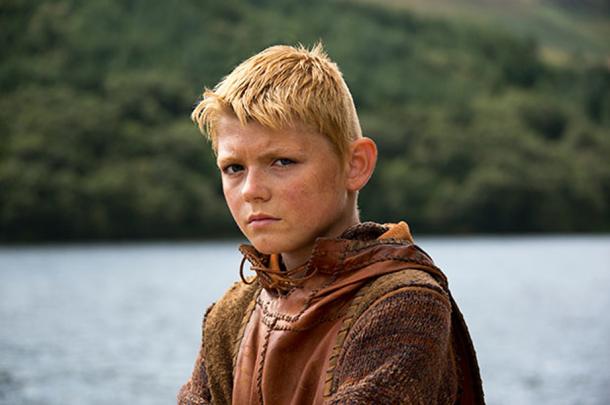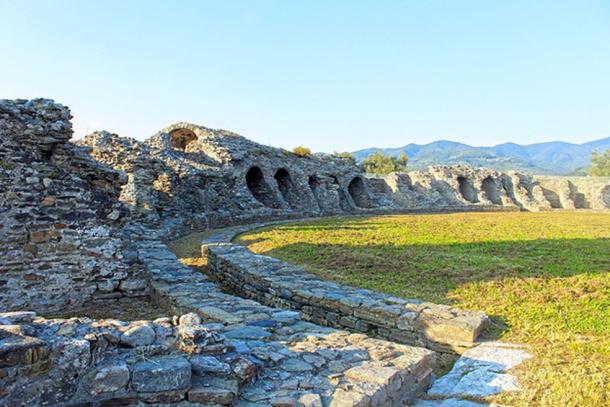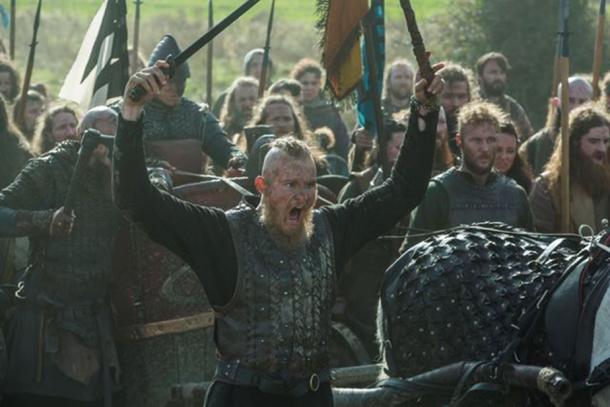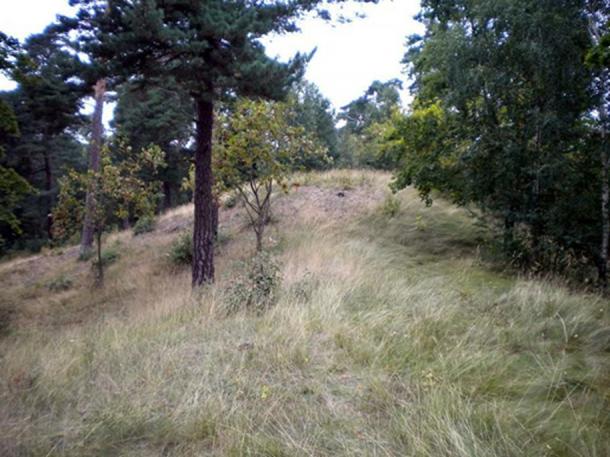Bjorn Ironside was a famous Viking leader who legends say ruled Sweden as the first king from the House of Munsö. He lived during the 9th century AD and his father was the legendary Ragnar Lodbrok. Ironside followed family tradition in raiding and he used his skills to trick his way into the Eternal City, which he promptly looted.
The Historical Truth Behind Björn Ironside
Björn Ironside is one of the main characters in the Irish-Canadian TV series ‘Vikings’ on History Channel. In the show, he is depicted as the son of Ragnar Lothbrok and shieldmaiden Lagertha. From the historical point of view, Björn, along with most of the characters in the serial, have been inaccurately portrayed. This, evidently enough, stems from the artistic license of the producers and writers of the show in order to make it more attractive to larger audiences.
In reality, Björn Ironside was indeed the son of Ragnar Lothbrok, but not with shieldmaiden Lagertha. He was the son of Ragnar Lothbrok and of Aslaug, as opposed to his depiction in the show. He was later on the King of Sweden at some point during the 9th century (most likely during the early part of the 9th century), after he had inherited the Kingdom of Sweden from his father. He is believed to be the first ruler of the Munsö dynasty, a royal line of semi-legendary Swedish kings. He is referred to as Bjǫrn Járnsíða in the Icelandic sagas, while in Swedish he is known as Björn Järnsida.

Björn Ironside played by Canadian actor Alexander Ludwig in History Channel’s ‘Vikings’. Image source: www.wallup.net
He is renowned during the Viking Age for his raids in modern France and England, as well as along the Mediterranean coastline. He, alongside his brother, Hastein, led successful raids in the south of France after pillaging various settlements in Spain.
He had also looted several cities from Italy on through his journey, cities such as Pisa or Luna (the latter of which he thought to be Rome when he had reached its walls). Björn Ironside also fought a Saracen fleet in Gibraltar, in his way to one of his raids from southern France. In the process, he lost 40 of his best ships but he had successfully fled to Sweden where he had lived the rest of his life as a rich man.
His life and deeds are documented in several early medieval chronicles such as the ‘Hervarar saga’ (also known as ‘The Saga of King Heidrek the Wise’), the ‘Ragnarssona þáttr saga’ (‘The Tales of the sons of Ragnar’) as well as the ‘Annales Bertiani’ or the ‘Annals of Fontenelle’, where he is mentioned as ‘Berno’, a Viking chieftain raiding modern France on the course of the river Seine throughout the 850s.
Following in the Family ‘Business’
According to The Saga of Ragnar Lodbrok and His Sons , Bjorn Ironside was the son of Ragnar Lodbrok and Aslaug. Bjorn had an older brother, Ivar the Boneless, and two younger ones, Hvitserk (speculated by some to have been the nickname of Halfdan Ragnarsson) and Sigurd Snake-in-the-Eye. He also had several half-brothers, including Eirik and Agnar.

History’s ‘Vikings’ version of a young Bjorn Ironside. ( CC BY SA )
Like their father, the sons of Ragnar Lodbrok conducted raids around Europe. In The Saga of Ragnar Lodbrok and His Sons , it is stated that Bjorn Ironside and his brothers continued their father’s raiding activities, and terrorized the areas of England, Normandy, France, and Lombardy.
It is also written that the furthest that the brothers got to was Luni, an Italian town on the border of Liguria and Tuscany. The story goes that the Vikings had heard of the wealth contained in the Eternal City and were bent on raiding it. Therefore, Bjorn teamed up with another Viking leader, Hastein, to launch an expedition into the Mediterranean.

View of the Roman amphitheater in Luni, Italy. ( CC BY SA 4.0 )
The Vikings sailed along the Atlantic coast of the Iberian Peninsula, though their raids met with little success in both Christian and Muslim territories. When they arrived in the Strait of Gibraltar, however, their luck changed, and they are recorded to have sacked several cities on both the North African coast as well as the southern part of the Iberian Peninsula. Sailing and raiding along the southern coast of the Frankish Empire, the Vikings eventually arrived on the northwestern coast of Italy. The first town that was sacked was Luni, which the Vikings had mistaken for Rome.
Trickery Works Where Sieging Fails
As the Vikings began to besiege Luni, they realized that the town’s fortifications were so sturdy, and foresaw that the siege would drag on for some time. Realizing that it would be futile to try to take the town by brute force, the Vikings resorted to trickery. There are two main versions of the story…
According to one, Bjorn (or Hastein) sent messengers to the bishop of Luni to inform him of their leader’s death. On his deathbed, however, he had converted to Christianity, and it was his dying wish to be buried on consecrated ground. Believing this to be true, the bishop allowed several Vikings to bring the body of their leader into the town. Once they entered Luni, Bjorn jumped out of his coffin, fought his way to the town’s gates, and opened it, thus allowing the Vikings to capture Luni. In a variation of the tale, Bjorn did not pretend to be dead, but rather that he was seriously ill, and intended to convert to Christianity before he died.

Bjorn preparing for battle in the series ‘Vikings’.
Bjorn Ironside Returns North
Having sacked Luni, Bjorn and his Vikings continued inland, sailing up the River Arno, and laying waste to Pisa and Fiesole. The Vikings’ movement become a little uncertain after this, and they are rumored to have sailed to the Eastern Mediterranean.
They reappear off the coast of the Iberian Peninsula, where they are recorded to have been defeated by a Muslim force whilst heading back home. As many as 40 Viking ships are said to have been destroyed by the Muslims, though Bjorn survived, and managed to bring home most of his loot.
Finally, The Saga of Ragnar Lodbrok and His Sons mentions that “Bjorn Ironside got Uppsala and central Sweden and all the lands that belong to that,” Thus, it has been claimed that Bjorn was a king of Sweden, and the founder of the House of Munsö.
During the 18th century, a barrow was discovered on the island of Munsö and antiquarians claimed that it belonged to Bjorn, thus naming his dynasty after this island.

The alleged barrow of Bjorn Ironside. ( Public Domain )
Top Image: Viking Bjorn Ironside Source: Fxquadro / Adobe Stock





